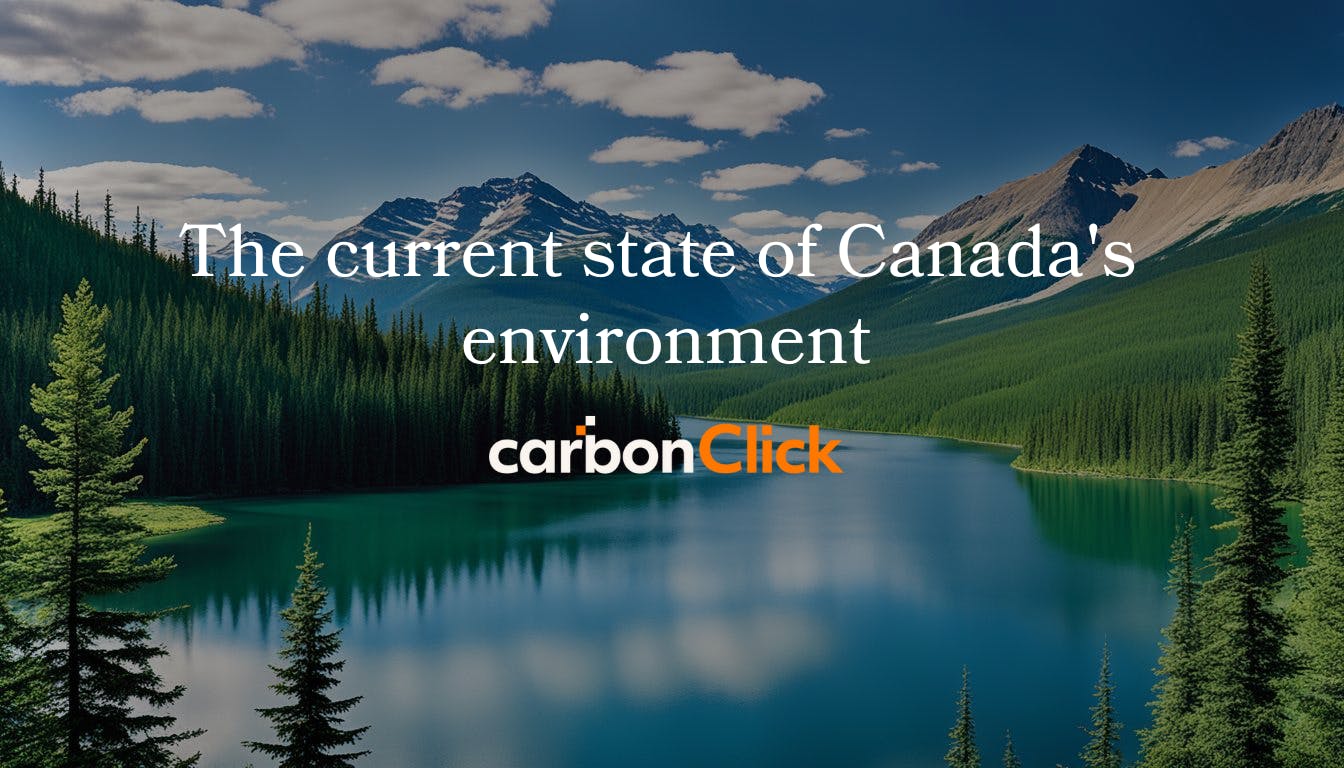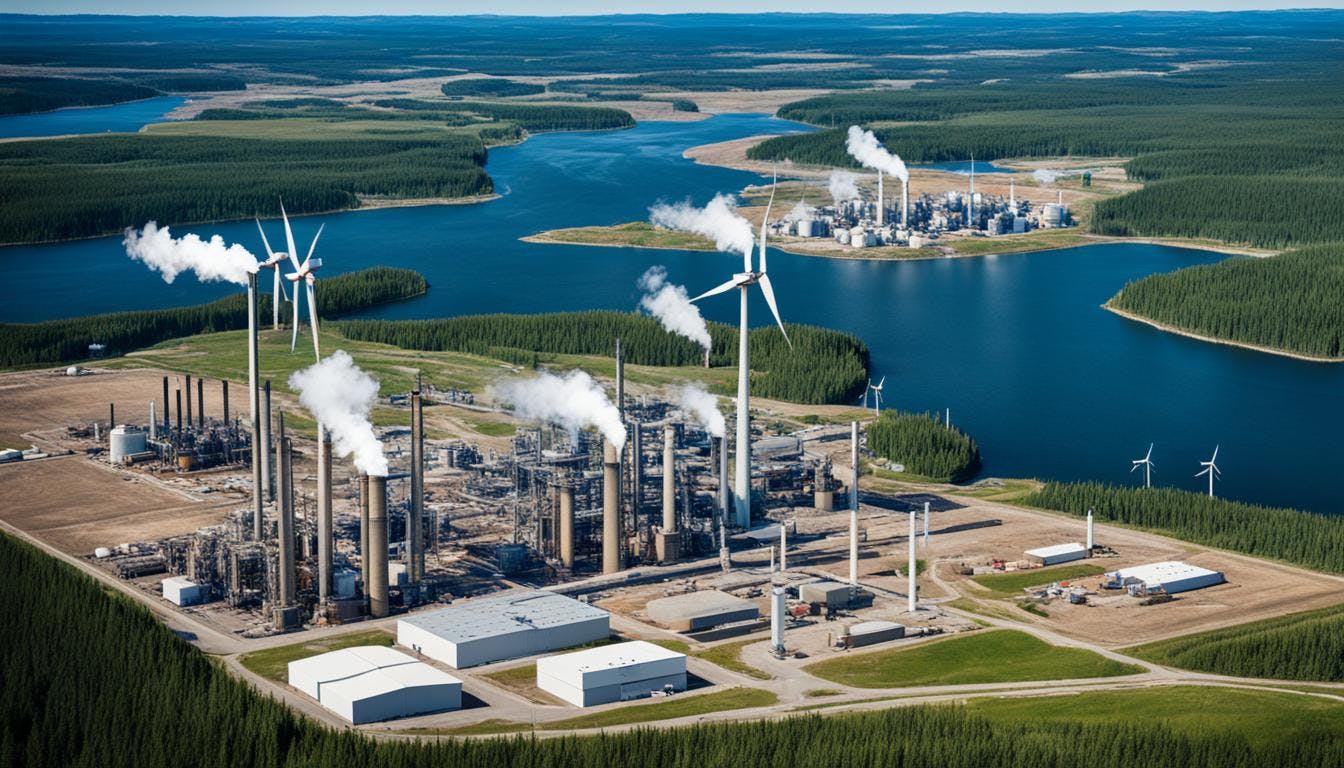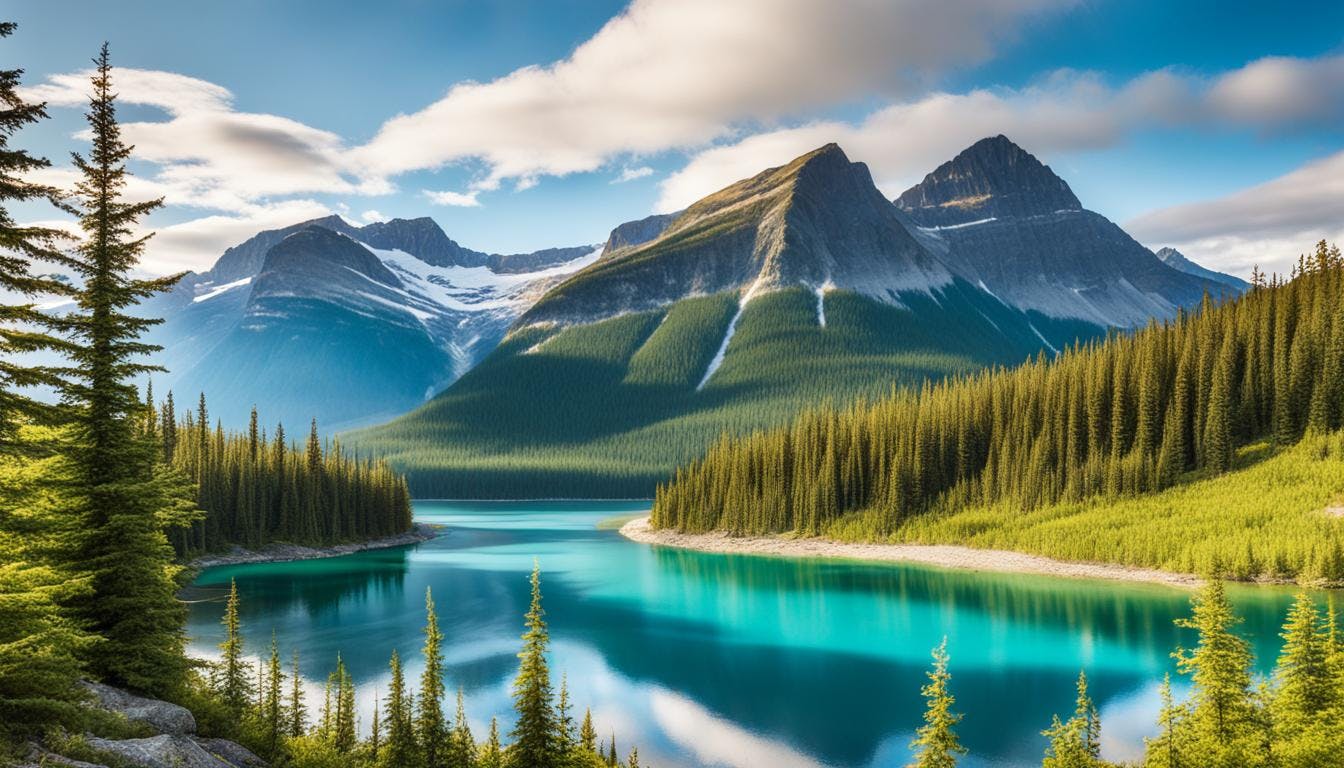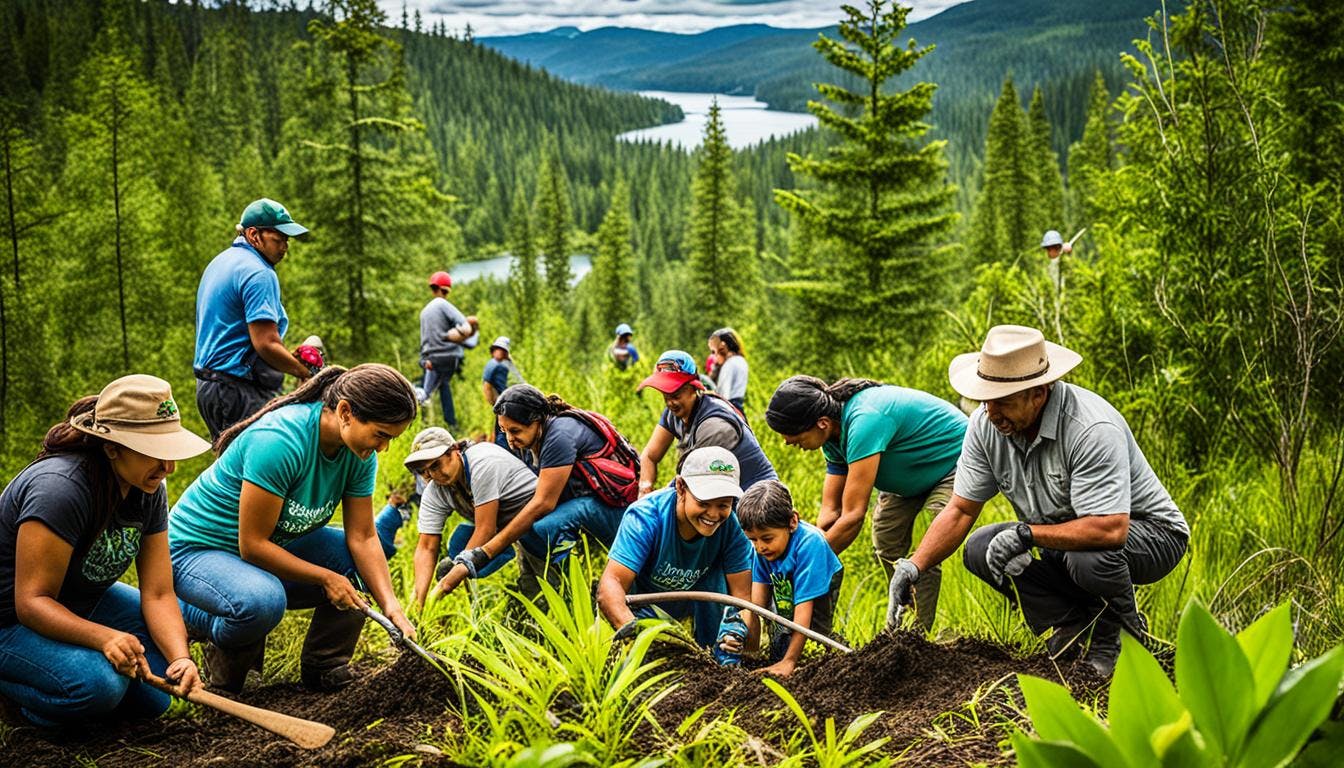Sign up. Be inspired. Get clicking.
The current state of Canada's environment
1 February 2023
Did you know Canada's mining industry is a big deal, employing about 700,000 people every year? It contributed a significant $107 billion to Canada's GDP in 2021. Our country is facing major environmental challenges that need rapid and substantial changes. We aim to cut emissions by 40 to 45% below 2005 levels by 2030 and achieve net-zero by 2050. This plan includes substantial investments in clean energy and new technologies to build a robust, low-carbon economy.
However, we are seeing a notable increase in carbon emissions from Alberta's oil sands, which are expected to rise by 124% by 2030. Over the last decade, mining waste has resulted in the loss of over 340 lives and polluted numerous waterways. This underscores the urgent need for stringent policies and actions to safeguard our environment.

The current state of Canada's environment
We're making big steps to tackle these issues. For example, Alberta is working on hydrogen projects and Nova Scotia is advancing carbon capture tech. Working together, provinces, territories, and Indigenous peoples are key to taking real environmental action.
Key Takeaways
- Canada’s mining industry employs around 700,000 people and added $107 billion to the GDP in 2021.
- Projected carbon emissions from Alberta’s oil sands could increase by 124% by 2030.
- Over 340 lives lost due to mining waste failures between 2008 and 2017.
- Significant investments in clean energy and innovative technologies aim to drive sustainable growth.
- Collaborative efforts with provinces, territories, and Indigenous peoples are pivotal for effective climate action.

Introduction to Canada's environmental challenges
Canada is working hard to cut down its greenhouse gas emissions. It aims to do this despite expecting an increase in emissions by 2030. The country faces significant challenges like climate change, pollution, and biodiversity loss. It's transitioning from coal to renewable energy, improving energy technology, and raising building standards. However, there are still major obstacles to overcome.
Climate Change
Global temperatures have increased by one degree Celsius since pre-industrial times. As of 2022, Canada is the 11th biggest emitter of carbon dioxide (CO2). It faces significant climate challenges, including emissions from oil and gas, which have risen by 467% since 1990. Wildfires also damage the environment, burning about 2.5 million hectares annually since 1990.
Pollution
Pollution in Canada is a major problem, primarily from mining and oil activities. It causes many premature deaths worldwide, affecting respiratory and cardiovascular health. In Canada, emissions from oil production increased by 24% from 1990 to 2022, worsening environmental and health conditions.
Millions of premature deaths worldwide are caused by severe air, land, and water pollution, with respiratory and heart diseases linked to indoor and outdoor air pollution.
Biodiversity Loss
Protecting Canada's biodiversity is crucial, as over 600 species are at risk. Despite efforts, these species have declined by 59% since 1970. Species such as the Southern Resident Killer Whale and Polar Bears face threats from climate change and habitat loss.
Collaborating with various groups, including provinces and Indigenous communities, is essential. The goal is to adopt sustainable practices and build environmental resilience.
Sustainable energy initiatives in Canada
Canada is leading the way to a more sustainable future with its energy projects. It's working towards a low-carbon future with renewable energy, improving energy efficiency, and investing in sustainable projects. These efforts aim to achieve a net-zero target.
Renewable Energy Projects
Canada plans to source 90%, and eventually 100%, of its electricity from clean sources by 2030. This goal is supported by the Canada Infrastructure Bank's Growth Plan, which allocates $2.5 billion for renewable energy projects, including generation, storage, and transmission.
Canada is also phasing out the use of traditional coal for electricity by 2030. This transition supports the aim of achieving a net-zero electricity grid by 2035. By doing so, Canada hopes to reduce greenhouse gas emissions by 40-45% from 2005 levels by 2030. This supports global efforts to address climate change.
Energy Efficiency Programmes
Improving energy efficiency is central to Canada's climate action plan. The country targets 600 petajoules of energy savings annually by 2030, up from 20 petajoules in 2017-2018. The Canada Efficient Homes Grant and training for energy-efficient building retrofits are essential to this goal.
The Canada Infrastructure Bank's Growth Plan also invests $2 billion in energy efficiency for large buildings. This initiative aims to reduce energy waste in homes and buildings, which account for 13% of Canada's greenhouse gas emissions.
Government Investments
The Canadian government is committed to sustainable energy through its investments. The Clean Fuels Fund received $1.5 billion in 2021 to support the construction of clean fuel production facilities. The Pan-Canadian Framework on Clean Growth and Climate Change and the Clean Fuel Regulations also bolster these efforts.
Canada introduced a carbon pricing scheme in 2019 to promote cleaner fuels. The aim is to facilitate a shift to sustainable energy, creating a better economic and environmental future for Canada.
These clean energy projects are expected to create 1 million jobs, positioning Canada as a leader in sustainable investments and energy practices.


Impact of climate change on Canadian ecosystems
Canada is experiencing the effects of climate change at a faster rate than the rest of the world. This change is significantly impacting its ecosystems. Canadian climate effects are causing temperature changes, which in turn affect farming, health, and forests. Natural disasters such as floods and wildfires are occurring more frequently, highlighting the need for prompt action.
In 2017, British Columbia faced its worst fire, burning nearly 900,000 hectares. The Fort McMurray fire in 2016 destroyed almost 2,500 buildings and displaced 90,000 people. To address these issues, the Canadian government has allocated $1.6 billion to support climate change adaptation.
The boreal forest plays a crucial role in addressing climate change, storing about 50% of the world's carbon in the soil. However, changes to ecosystems in these forests and the decline of the grey jay population indicate that more protection is needed. The government is monitoring factors such as temperature, snow, and water levels to understand these changes.
Projects like the Wildfire Resilient Futures Initiative and the Flood Hazard Identification and Mapping Program are vital. They assist in building resilience against these changes.
The Arctic is warming faster than any other area, which means we need specific plans to adapt. The report from Natural Resources Canada highlights the need to reduce barriers and support Indigenous-led climate projects. This ensures we manage our natural resources sustainably.
Forest and Coastal Resilience
The Forest Carbon Initiative maintains the health of our forests, which aids in addressing climate change. The climate-resilient coastal communities programme also supports adaptation in coastal areas. These efforts are essential to protecting Canadian wildlife and ecosystems for the future. The focus is on forests and coastal areas to adapt to climate change.
Canada's conservation efforts and strategies
Canada has made strong efforts to protect and expand natural areas. This is to maintain its diverse ecosystems in a healthy state. By doing this, Canada aims to prevent biodiversity loss and help protect Canadian wildlife.
Protected Areas
Protected areas are crucial to Canadian wildlife conservation. Approximately 7% of Canada's forests, or 24 million hectares, are safeguarded from activities like logging and mining. Most of these protected forests are within national and provincial parks.
Canada aims to protect 25% of its lands by 2025 and 30% by 2030. It currently has 48 national parks, such as Banff and Jasper, which vary in size and significance. These areas are managed to preserve natural ecosystems, adhering to national regulations and IUCN categories.
Canada also safeguards its oceans, with 15.54% under protection. The goal is to conserve 30% of marine and coastal areas by 2030. For instance, the Mamalilikulla First Nation and the Department of Fisheries and Oceans collaborate to protect marine life in the Gwa̲xdlala/Nala̲xdlala refuge.
Biodiversity Indicators
Assessing ecosystem health involves various indicators. In forests, progress is monitored by evaluating species recovery and forest management practices. The Canadian Forest Service investigates how logging impacts species like the marten and boreal caribou. Their research indicates that certain logging methods benefit bird populations in boreal forests.
Research also examines the role of riparian areas in forests. Additionally, there are efforts to monitor wetland conservation, sustainable farming practices, and control invasive species. These changes affect both marine and terrestrial ecosystems.
By tracking these indicators, Canada can make more informed conservation decisions. This helps keep its biodiversity efforts on track. Collaboration with Indigenous Peoples further strengthens these efforts, as they play a key role in conservation.


The role of Indigenous peoples in conserving the environment
Indigenous environmental stewardship is crucial to protecting Canada's biodiversity. Our communities, with their deep traditional ecological knowledge, manage vast lands vital for ecosystems. They oversee about 40% of protected areas and intact ecosystems, demonstrating a strong environmental commitment.
Indigenous Environmental Stewardship
Indigenous conservation extends beyond mere land management. Our allies employ knowledge passed down through generations, blending traditional and modern conservation methods. Projects like Thaidene Nëné and Pimachiowin Aki exemplify Indigenous leadership in safeguarding nature.
The Canadian government is increasingly collaborating with Indigenous peoples. By incorporating Indigenous perspectives into climate action and conservation, we can better meet our environmental targets. Indigenous peoples manage lands containing 80% of the world's biodiversity, highlighting their global significance.
Indigenous environmental work also provides economic benefits. A study in the Northwest Territories found a $2.50 social return for every dollar spent on guardian programmes. This underscores the extensive economic advantages of supporting Indigenous conservation efforts.
In conclusion, Indigenous peoples and their knowledge are essential as Canada addresses environmental challenges. Working with Indigenous communities is vital for fostering robust, healthy ecosystems across the country.
Pollution control measures and their effectiveness
Canada is deeply committed to reducing pollution. It works on improving air quality, preventing water pollution, and conserving soil. These efforts are crucial for a healthy environment and a sustainable future.
Air Quality Improvements
Canada is making significant progress in improving air quality. It closely regulates pollutants such as sulphur dioxide from industries. For example, the Trail Smelter in British Columbia captures 91% of its sulphur dioxide waste, converting it into useful products.
Alberta also plans to produce over three million long tons of elemental sulphur from sour natural gas each year. These actions are essential for reducing pollution in Canada. New regulations to lower emissions from coal-fired plants and stricter vehicle standards are also contributing to this effort.
As a result of these initiatives, air quality has improved considerably. This has saved approximately 15,300 lives each year across Canada and also helps address climate change.
Water Pollution Control
Preventing water pollution is a major component of Canada's environmental strategy. The country manages nutrient levels in waterways and enforces strict regulations to protect its waters. Regulations under the Canadian Environmental Protection Act, 1999, target various pollutants to keep them under control.
These measures are vital for the health of aquatic ecosystems, human health, and biodiversity. They ensure that our water remains clean and safe.
Soil Conservation
Soil conservation is a key aspect of Canada's environmental policies. Sustainable farming practices are used to protect soil health, support wildlife, and maintain productive land. Techniques such as crop rotation, reduced tillage, and organic farming help prevent soil erosion and degradation.
By focusing on soil conservation, Canada maintains the fertility and productivity of its agricultural lands, thereby reducing negative environmental impacts.


Economic implications of environmental policies
Canada is moving towards a sustainable economy, transforming many sectors. This shift brings both positive and negative changes. Examining its impact on jobs and the economy is crucial.
Job Creation in Sustainable Sectors
Renewable energy and sustainable practices are generating numerous new jobs. By 2030, clean energy jobs could increase by nearly 50%, reaching over 639,000. This not only supports the economy but also advances us towards a sustainable future.
Jobs are growing in renewable energy, sustainable building, and environmental protection. This reflects Canada's commitment to a sustainable economy.
Impact on Traditional Industries
The rise of new sustainable sectors poses challenges for traditional ones. Mining and oil production are experiencing significant changes. We need to manage growth, employment, and environmental protection carefully.
The impact of environmental policies means we must plan to reduce job and income losses, especially for low-income families.
Transitioning to a low-carbon economy benefits both the environment and our finances. By taking action now, we can ensure a smooth shift to a sustainable economy. This will lead to a stable, affordable future for everyone in Canada.
While oil and gas face difficulties, there is an opportunity to train workers for new jobs. This is essential for preparing for the impact of environmental policies in the future.
Conclusion
Canada is at a crucial point in its environmental journey. We must reconcile our economic objectives with the urgent need to protect nature. The path forward requires a meticulous plan that leverages the latest data and aligns with global climate goals.
Reports such as the 2022 "Health of Canadians in a Changing Climate" and the 2019 "Canada's Changing Climate Report" highlight the significant challenges we face. They also identify opportunities for innovation and collaboration.
The cost of failing to address climate change seriously is substantial. Weather-related disasters have increased by 1,250% since the 1970s, rising from an average of $8.3 million per event to $112 million in the 2010s. These disasters now impact GDP growth by 5-6% annually.
However, only 13% of climate change funds from 2017-2021 were allocated to adaptation measures. This indicates that we are not adequately preparing for a sustainable future.
The federal plan, "A Healthy Environment and a Healthy Economy," is central to addressing these issues. It outlines actions to reduce pollution, invest in clean energy, enhance transportation, and utilise nature to address climate change. These measures are essential and necessary.
Implementing these strategies is vital for a future where Canada's climate goals are not only achieved but exceeded. For more details on this plan, visit "A Healthy Environment and a Healthy Economy."
FAQ's
What are Canada's current goals for reducing greenhouse gas emissions?
Canada aims to reduce its greenhouse gas emissions by 40 to 45% below 2005 levels by 2030. The target is to achieve net-zero emissions by 2050. This is part of its strategy to address climate change.
How is Canada addressing environmental pollution from traditional industries?
Canada is addressing pollution through stringent regulations. The country is phasing out coal power, monitoring air quality, and implementing measures to protect water and soil. These actions are intended to reduce the environmental impact of mining and oil extraction.
What are some key initiatives in Canada's sustainable energy transition?
Canada is advancing its transition to sustainable energy with initiatives such as electric vehicle production in Ontario, hydrogen projects in Alberta, and investments in carbon capture technologies in Nova Scotia. These efforts contribute to improving energy efficiency and progressing towards a low-carbon economy.
How does climate change affect ecosystems in Canada?
Climate change alters temperature patterns in Canada, affecting agriculture, forests, health, water resources, and ecosystems. The government tracks indicators such as temperature and water levels to address these impacts and protect natural environments.
What strategies does Canada employ to conserve biodiversity?
Canada aims to protect 25% of its lands by 2025 and 30% by 2030 through conservation initiatives. It uses biodiversity indicators to monitor progress and guide conservation decisions.
How do Indigenous communities contribute to environmental conservation in Canada?
Indigenous peoples play a crucial role in conservation by applying traditional knowledge to sustainable land management. They are instrumental in conservation efforts, working alongside the government to safeguard natural areas.
What do recent data and findings indicate about Canada's environmental state?
Recent data shows progress in some areas, such as reductions in certain pollutants, but also highlights challenges in others, such as forestry and air quality. The government is focusing on climate action through investments in clean energy and conservation.
What measures are in place to improve air quality in Canada?
Canada monitors pollutants like sulphur dioxide and nitrogen oxides and has implemented strategies to reduce their impact. The country adheres to strict regulations and international standards to maintain clean air.
How is water pollution being managed in Canada?
Canada is addressing water pollution by monitoring nutrient levels and enforcing measures to protect water ecosystems. These efforts aim to keep water clean for various uses and to protect aquatic life.
17 South Street
Auckland 1010
New Zealand
info@carbonclick.com- -
- X
Subscribe now to stay up to date with CarbonClick, carbon offsetting and climate action.
By signing up you agree to our Privacy Policy.


